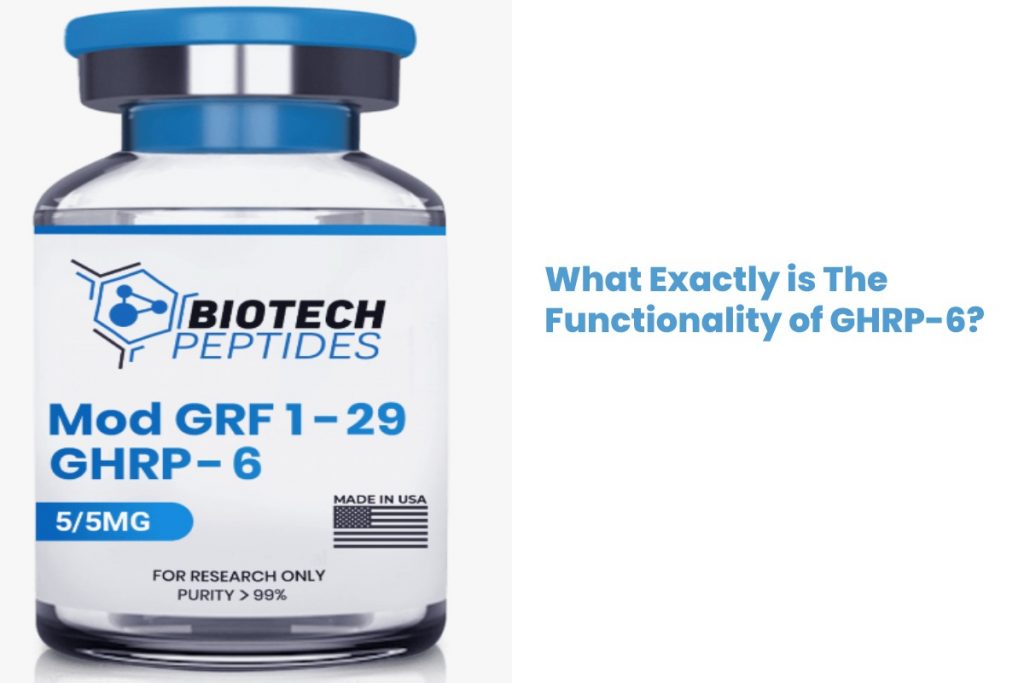Growth hormone secretion in animals may be increased with the administration of GHRP-6 for sale, a secretagogue peptide. It’s a hexapeptide, which means it has a six-amino-acid chain.
Functionality of GHRP-6
GHRP-6 has been shown to boost the stimulation of the pituitary gland in animal test participants via scientific study. Many vital body functions are controlled by this small gland, which is situated near the base of the brain.
- Regulation of water
- The functionality of the thyroid gland.
- Growth
- Pain alleviation
- High blood pressure
- The ability to control the temperature.
Due to GHRP-6’s presence, an animal test subject’s gland cannot suppress hormone production, which results in an increased capacity to create growth-promoting hormones. An animal test subject’s central nervous system is also impacted by the peptide’s role in activating intracellular signalling pathways employed by hormones as it enhances cell survival. Because of this correlation, the peptide might have a substantial role in preventing cell loss and function in hypoxic-ischemic brain traumas, such as a stroke.
When it comes to its ability to induce appetite, GHRP-6 has another critical component: its interaction with ghrelin. The peptide boosts ghrelin synthesis, which causes animals to feel hungry for more extended periods during tests. This causes an increase in hunger, which increases the amount of food consumed, which in turn offers more fuel for the pituitary gland to produce hormones.
In addition, GHRP-6 raises IGF-1 secretion. According to scientific studies, natural secretion is the primary anabolic mechanism for the hormone, which increases growth in animal lab rats. These findings demonstrate that GHRP-6 stimulates the central nervous systems of animal test subjects to produce more IGF-1.
Theoretical Advantages of GHRP-6
On animal test subjects, GHRP-6 is now being researched scientifically. There is a suggestion that the peptide might offer several potential advantages, including:
- An increase in muscle mass is one of GHRP-6’s primary mechanisms for promoting growth in animal test groups, which helps create more muscle mass. Muscle and tissue healing may also be accelerated by using these hormones.
- Even though it raises the production of the hunger hormone ghrelin, GHRP-6 has been shown in animal tests to allow the liver to release a higher quantity of IGF-1, which aids in burning fat. Because of this, the participants’ bodies are better equipped to break down fat tissue. If the increased food intake is not turned into energy, an animal test subject may gain weight.
- Additionally, GHRP-6’s enhancement of hormone production in animal test participants increases bone density.
- A more effective immune system in animals is one of the benefits of using GHRP-6, which stimulates the pituitary gland. Pain and damage healing is aided by the pituitary gland involved in this process.
- GHRP-6 has been shown to increase the synthesis of growth hormone in animal test subjects, leading researchers to hypothesize that GHRP-6 might speed up the healing process for joints and connective tissue.
Consequences Anticipated from the Use of GHRP-6
GHRP’6 has been related to some potential advantages in the scientific study of using animals. However, various case studies have shown that the peptide may have some theoretically detrimental side effects. These are some of the potential negative impacts that have been theorized:
- Light-headedness
- An increase in hunger
- Dizziness
- Nausea
- Aches and pains in the bones
- Numbness or tingling of the skin
- Reduced sensitivity to touch
Animal studies have also supported the hypothesis that GHRP-6 could induce hypoglycemia. The problem is that there hasn’t been enough research or anecdotal data to support these views in the long run.
